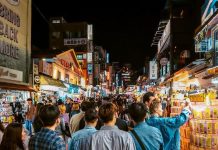You don’t have to be a religious pilgrim to visit Jerusalem! The mysterious yet charming city is firmly established as a contemporary space while retaining its ancient and spiritual character. Jerusalem not only attracts believers, but its overall magnetism forms part of the attraction for any tourist, where you will soon find that a single visit is not guaranteed enough time to fully understand its history, beauty and mystery. So, is Jerusalem worth visiting, how to visit Jerusalem, what to do in Jerusalem and how to plan a perfect budget trip to Jerusalem for the first-time? Let’s check out our Jerusalem travel blog (Jerusalem blog) with the fullest Jerusalem travel guide (Jerusalem guide, Jerusalem tourist guide) from how to get there, best time to come, where to stay, best places to visit, what to eat and top things to do in Jerusalem to find out the answer!
- Tel Aviv travel blog — The fullest Tel Aviv travel guide for first-timers
- The ultimate guide to Hongdae. Seoul’s HOT Shopping, Dining & Entertainment Neighborhood
- Hongdae travel blog — How to visit, what to do in Hongdae & what to eat in Hongdae?
- 15+ most famous & best temples in Korea
- Best bubble tea in Taiwan — Top 11 most famous & top bubble tea brands in Taiwan


Jerusalem is a city I must visit once in my life. I’ve been so convinced for a long time, probably since I heard this place name on the news when I was a kid. Indeed the names such as Jerusalem, the Middle East, the State of Israel or Palestine has never evoked danger to me. Until, I had been read Phuong Mai’s book “Islamic Way” (a story of Middle East, Islam and Islamism), I started began to fall in love with this land full of honey, ancient and full of mysteries. In January 2020, just before the Covid-19 pandemic broke out like a storm, I was able to go to Israel to attend an international fair with the tourist company I am working for. Awesome, from then, my dream has come true. I know when I really like something, I’ll do it until the end. Here is a very detailed guide to Jerusalem for those who want to go on their own.


Jerusalem travel blog: Overview of Jerusalem
Jerusalem is a city in the Middle East, located on a plateau in the Jewish Mountains between the Mediterranean Sea and the Dead Sea. It is one of the oldest cities in the world and is considered extremely sacred to the three main Abrahamic religions: Judaism, Christianity and Islam

There are some places you visit in the world that you know right away will never compare to any other place you have been to in the past or will visit in the future. Jerusalem is definitely one of them. It is a holy city that has gone through turbulent times and is contested by three monotheistic religions – Judaism, Christianity and Islam.
Today, the city is divided into four quarters: the Jewish Quarter, the Christian Quarter, the Muslim Quarter and the Armenian Quarter. Although ostensibly peace and prosperity in present-day, the reality beneath the layers of history reveals not only the struggle of the past, but also the present, for the ancient city once considered a the center of this world.

The layers of history are not only figurative but actually very literal, as this city has been destroyed and rebuilt more than a dozen times throughout its history. Each time the city is rebuilt, it rises higher above another layer of rubble, creating a very unique look at history through the ages. Are you planning a trip to visit Jerusalem for the first time? Check out this Jerusalem travel guide for things to do in Jerusalem, for any culture buff.
Where is Jerusalem?

Jerusalem has a complex geographical and administrative position. This city is located in the northwestern plateau of the Arabian peninsula, more specifically on the border between Israel and the West Bank of the Jordan River – the land is under administrated by Palestine. In the most obvious terms, Jerusalem is currently the contested city of two state institutions, Israel and Palestine. However, in theory this is so, but in reality the state of Israel almost completely governs Jerusalem.
Why should you travel to Jerusalem?
Jerusalem is the Holy Land, the birthplace of the three largest monotheistic religions in the world: Judaism, Christianity and Islam. So Jerusalem is home to many of the most important churches, monasteries, temples and religious monuments in history. If you love history and politics you must visit this city. Jerusalem also has been the center of political instability and religious strife for the past 2,000 years. But like the eye of a storm, this place is strangely peaceful and solemn. If you want to experience a new sense of travel, Jerusalem is unique enough than any city you have ever passed.

Located at the crossroads between Europe, the Middle East and North Africa, Jerusalem is a crossroads of many cultures, both interacting and opposing. Just coming to Jerusalem you have the opportunity to see the architecture, enjoy the cuisine, experience the cultures of many world civilizations. With a history of 5,000 years and many myths and sacraments taking place here, today Jerusalem is still the most mysterious land in the history of the world. If you have religious beliefs then come here.
Is Jerusalem safe?
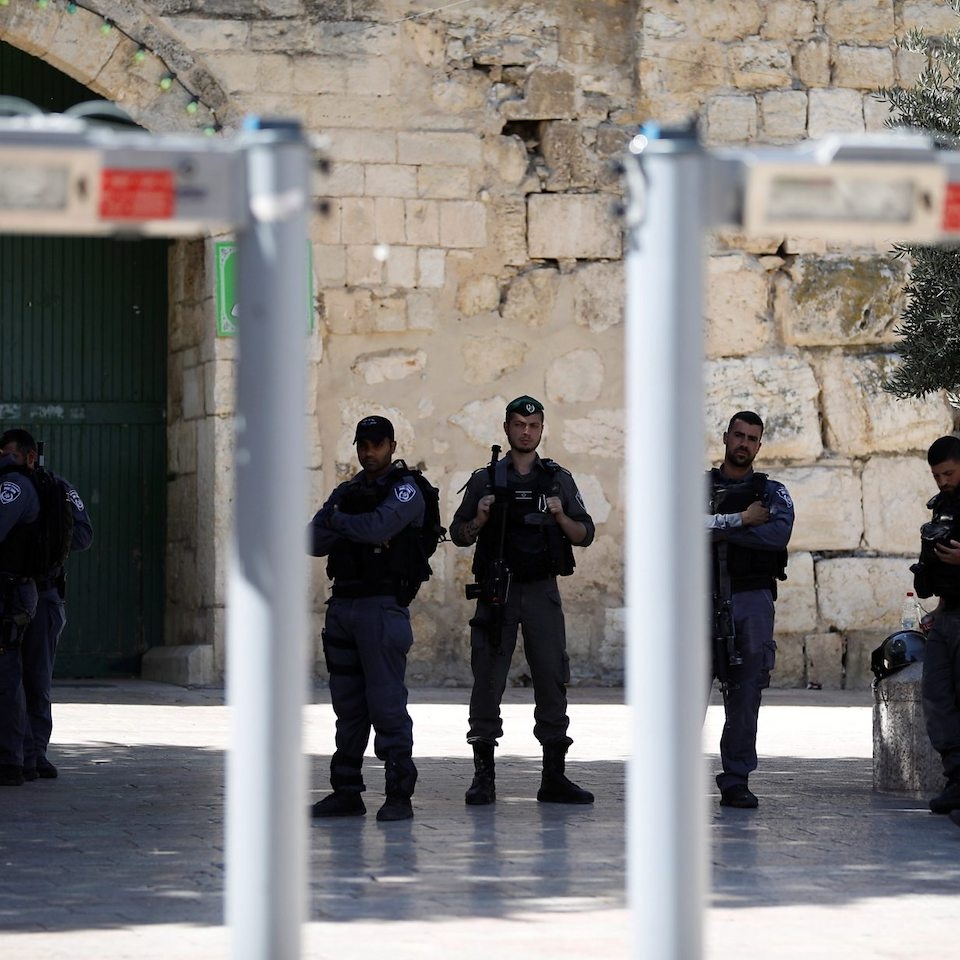
This ancient city has been at the heart of military and political unrest in the Middle East for nearly a century. A lot of my friends were surprised when I traveled to Jerusalem. Almost everyone thinks there is still conflict between Israel and Palestine in this Holy Land. In fact, that was 70 years ago, and now Jerusalem is a land with the most strict security control in the world. All visitors to Jerusalem must pass through a multi-layered security check: From the bus station to the sightseeing sites. Not to mention the police with uniform and non-uniform were densely arranged in the city. People come here for pilgrimage, so any act of causing chaos is disrespectful. Moreover, after nearly a century, the Middle East Peace Process is warming up significantly under the Trump presidency. In short, Jerusalem is a safer city than usual.

Don’t be surprised when you see armed members of the Israel Defense Forces in the city of Jerusalem and beyond. The majority of these young people are serving the Nation and as intimidating as it may seem at first glance, you’ll soon find it’s a normal part of everyday life here.
Is Jerusalem the capital of Israel or Palestine?

Many people think that Tel Aviv is the capital and largest city of Israel, but it is not. Jerusalem is the capital by the law and also the most populous and richest city in Israel. Palestine also declares Jerusalem as its capital, but the state of Palestine has not been recognized by the United Nations. Today tourists only access the western part of Jerusalem, while the eastern part is now Palestinian territory and is quite complicated.

Jerusalem travel blog: When to visit?

With the Mediterranean climate, the weather here is often long summers and cold, short winters. The coldest time in Israel is in January, the temperature ranges from 5 to 12 degrees Celsius, the hottest is in August with the average temperature arounds between 18 and 38 degrees Celsius. Between November and March is the time when long and frequent rains and storms occur, and from June to September, it is dry and without rain, so it is very inconvenient for traveling to Israel. Therefore, from the end of November to early March next year and the end of March to the end of July is the “best time to travel to Israel” because the weather is cool at this time, not too hot nor too cold, very suitable. for sightseeing.

Many people think that the Middle East must be as hot as a fire oven because of the desert climate, right? However, Jerusalem is located on a mountain 754m above sea level, so the climate here is quite cool. In January, when I came, it was cold at 7 degrees Celsius.
Jerusalem travel guide: How to get to Jerusalem?
To get to Israel you definitely have to fly to Ben Gurion airport. Jerusalem cannot be reached by land from neighboring countries because all almost Arab countries block theirs borders and flights to Israel.
From Ben Gurion airport you take a taxi straight to Jerusalem. If you come to Jerusalem from Tel Aviv, it can take 2 hours by train and 1 hour by bus. During my trip, I choose a coach because it saves time and I don’t get car sick. You can go to Arlozorov station to take bus 408 or take bus 405 at the central station to reach Tel Aviv. If you take the train, go to Hagana station or Tel Aviv Savidor Central railway station.
Are means of transport and services in Israel operating on Saturdays?

The answer is no. From Friday afternoon to Saturday night, all public transport activities are closed, restaurants and offices are closed. You should avoid this time if moving from one city to another. There are still taxis operating but not many and the price is also more expensive than usual. The only thing you should do on Shabbat as a tourist is to take a leisurely walk on the road and not go too far.
Jerusalem guide: How to get around Jerusalem?

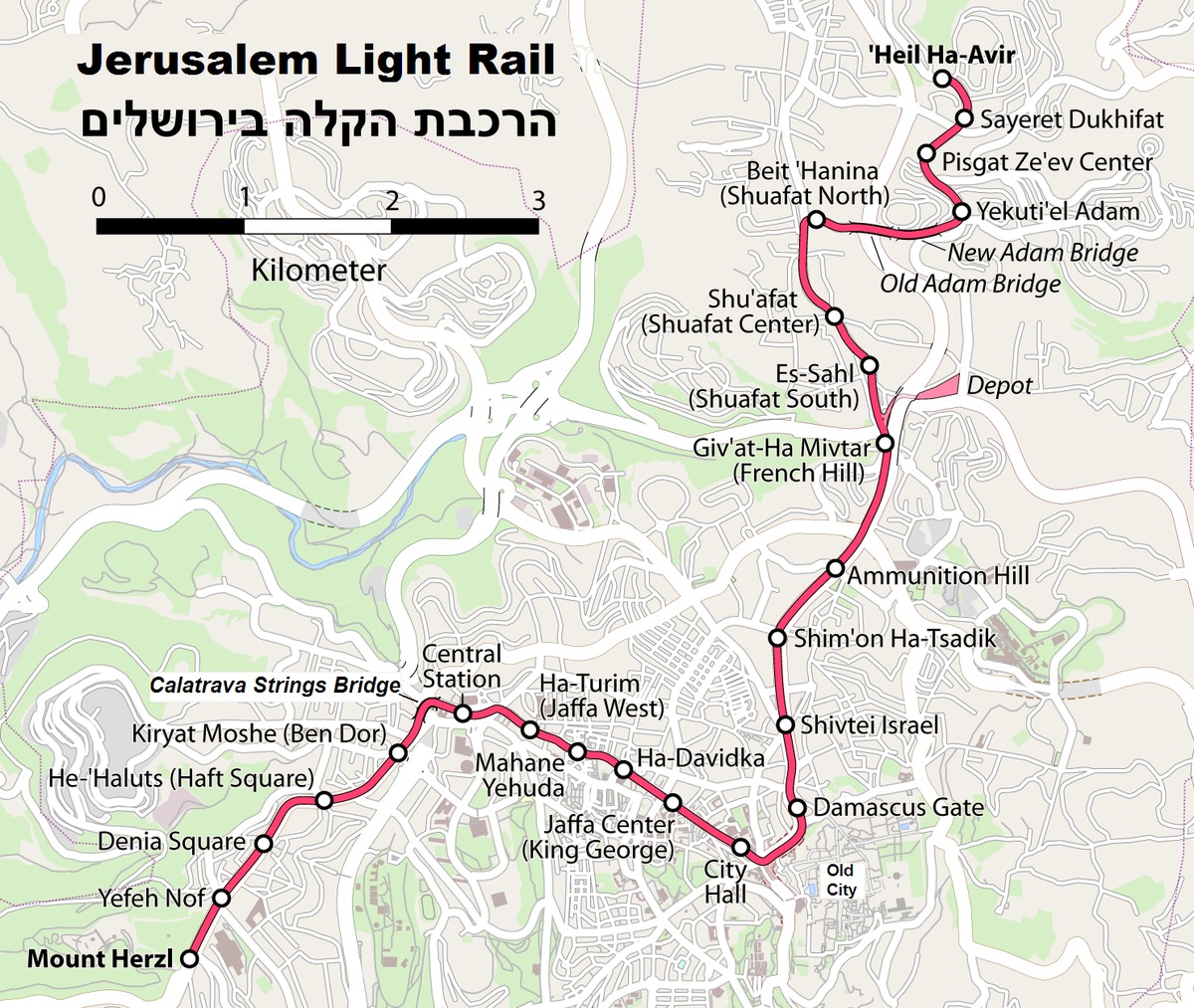
The city of Jerusalem includes the Old City and the New City. The old quarter is quite small and there is no public transport in it, so please walk. Tourists and residents mainly use trams and buses to move from the bus station to the hotel and from the new quarter and the old town. Tram is the popular and easiest means of transport to use in Jerusalem, just catch the Tram or Metro 01 running from Mount Herzl to the West Bank, you can getting to many tourist places. Most hotels or attractions are located along this metro line.

Although Jerusalem is not really large, it is very hilly and therefore a lot of roads wind around the hills. There are no real city streets but more like an interwoven network of roads and trails. For daily commute, taking a public bus is very useful. You will see people queuing to get on the bus, especially during the morning and late rush hours.

Where to stay?
Because it is a tourist city, the choice of hotels and B&B here is quite rich. However, because it is an old city, most of the hostels and B&Bs have small, ancient and bearing Middle Eastern style. The hostel I rent is Stay Inn Hotel Jerusalem in the New Quarter, the room is old but the hot water, kitchen and location are all very good.
Below we recommend more best budget, mid-range and upscale hotels with good ratings and reviews you can refer to.
- The American Colony Hotel (Agoda, Booking)
- Bezalel Hotel – an Atlas Boutique Hotel (Agoda, Booking)
- Arthur Hotel – an Atlas Boutique Hotel (Agoda, Booking)
- Herbert Samuel Jerusalem (Agoda, Booking)
- King David Hotel (Agoda, Booking)
- Orient Isrotel Exclusive Collection Jerusalem (Agoda, Booking)
- Mamilla Hotel (Agoda, Booking)
- Dan Boutique Jerusalem (Agoda, Booking)

Check out more top and best hotels in Jerusalem on Agoda.com or Booking.com
Jerusalem tourist guide: Where to go, what to do and top things to do in Jerusalem
Most people think of Jerusalem and think of a highly religious city, rife with places of worship, layers of historical dust, and possibly some conflict. But beyond that, Jerusalem is a vibrant and bustling city with a fascinating mix of cultures and people, and pleasant surprises at every turn, nook and cranny. Jerusalem has a history spanning millennia, with so much to see and do in the city, making it not only an important place if you’re religious person but also if you’re interested in with just a little bit of history.

Jerusalem is dense with religious, archaeological and artistic atmospheres, so many people come to this city many times in their lives to discover as much as 5,000 years of Western history encapsulated in 650 square kilometers. I spent 2 days and 1 night in Jerusalem but still haven’t visited all the famous landmarks because the city is only as small as Ba Dinh and Hoan Kiem districts while the number of monuments, relics, ruins here is denser than any other ancient city in the world. Here is the Jerusalem itinerary for 3 days 2 nights.
New Jerusalem (Downtown)

Jerusalem appeared in our eyes under the golden sunlight and blue skies of the Middle East. Contrary to imagination, Jerusalem’s New Neighborhood is crowded, luxurious and seemingly richer than Tel Aviv. Although Tel Aviv is the financial and commercial capital, it cannot have the majesty and prosperity of Jerusalem. Along the main street of Jaffa, there are a number of brands, mansions, administrative offices, banks and restaurants. People walking on the street are mostly pilgrims, most of them wearing traditional religious costumes, the rest of the locals seem to be more relaxed than the busy atmosphere in Tel Aviv. Most of the buildings in Downtown were built during the British takeover of Jerusalem from 1917 to 1948 with a simple but elegant Bauhaus style. Downtown is not the main attraction, so the atmosphere here is quite peaceful like an early morning.


Old City of Jerusalem – Uptown
Old Quarter
The Old City of Jerusalem is 5,000 years old, but the buildings in good condition were mostly built during the Ottoman period from the 16th to 19th centuries, the rest are mostly ruins or preserved in museums. The old town is divided into 4 districts: the Jewish District, the Christian District, the Muslim District and the Armenian Christian District, with four gates named Jaffa, Damascus, Lion and Zion. From the New Quarter to the Old Town, we usually go through Jaffa Gate, from the avenue of the same name. Here are the prominent attractions in the Citadel you should visit.


Exploring all parts of the Old City is a must when traveling to Jerusalem. A walled city of stone structures, set in the golden hues of the sun, creates a maze of paths that cut this ancient citadel into Muslim, Christian, Armenian quarters and Jewish.

Tower of King David and Citadel Area

This is believed to be the place where King David, who defeated the giant Goliath and ascended the throne of Israel in 970 BC, laid the foundation of the Palace. However, after many destructions, the present-day form of the Citadel was built during the Ottoman period. The most obvious sign is the prominent Islamic prayer tower. In addition, the Tower of David is a complex museum that includes rooms showing Israel through each historical period. The main courtyard was excavated so that the public could clearly see moats, the old foundation of the old imperial citadel. At night there is also an art performance recreating the history of the Jewish nation.
Church of the Holy Sepulchre
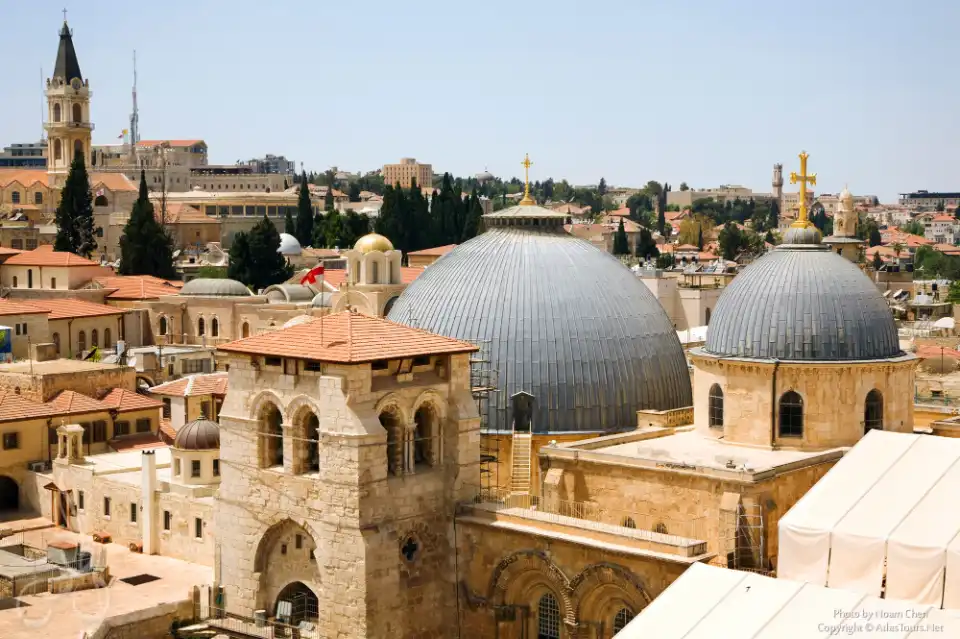
Going further northeast, we will meet the Church of the Holy Sepulchre, where the body of Jesus was buried. According to Christian belief, this is the hill of skulls, where Jesus was crucified, buried and resurrected 3 days later. During the time of Christ, this was outside the ancient city of Jerusalem. Today, the tomb is surrounded by a church that was rebuilt almost new in 1808. Today the church is always full of pilgrims.

The Church of the Holy Sepulchre is considered the holiest site in the world for Christians and is believed to have been built on the site of Jesus’ crucifixion, burial, and resurrection. The building as it stands has been built and destroyed many times over thousands of years with what stands today as a rather large and impressive church. Given its great significance, prepare to line up here if you want to see most of the main attractions inside the church with some waiting for hours, especially the queue to see the tomb of God Jesus where he was resurrected.
Via Dolorosa (The Path of Sorrows)
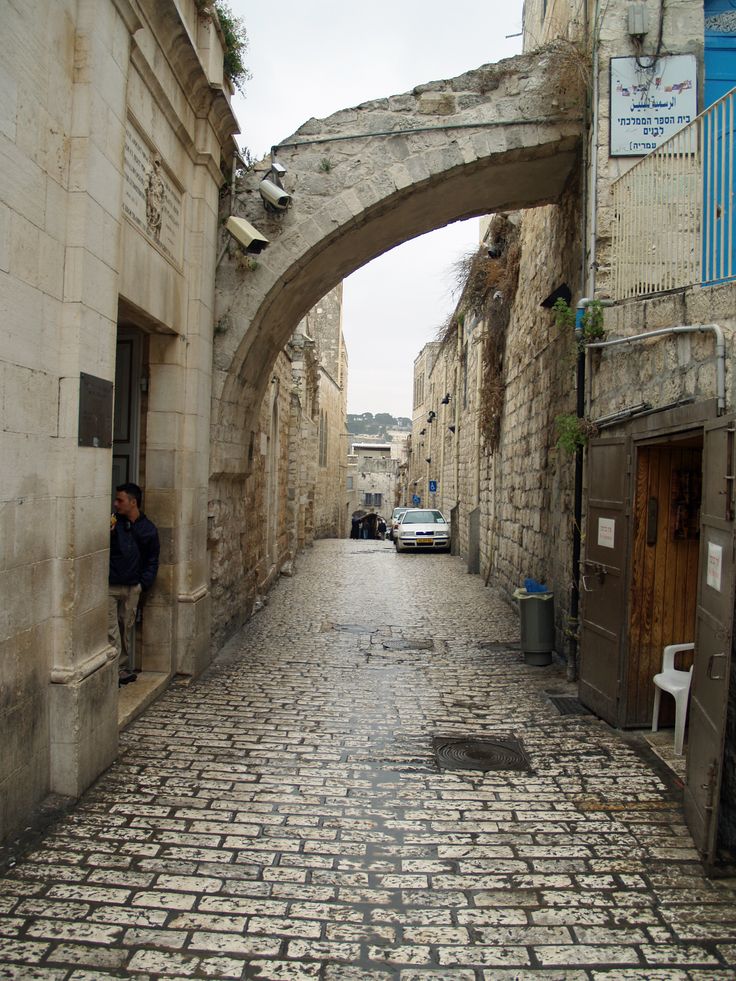
This is the path that Jesus suffered from the place of Roman torture to the hill of skulls to be crucified. This road I almost didn’t notice because it was a very normal looking road but each section would have a sign saying where Jesus fell, where God met his mother Mary for the last time, etc.
Wailing Wall (Western Wall)

The Western Wall is actually the remains of an ancient Jerusalem temple and is an extremely sacred site for Jews, Christians, and Muslims. The wall was first built around 19 BC and is now one of the oldest attractions in Jerusalem. When you visit, there are separate areas for men and women with men having to cover their heads with top hats while women need to cover shoulders and legs.

English is often written as the Western wall. This is the only surviving wall of the Jewish Temple that existed between 500 and 70 BC. Before it was destroyed by the Romans and started the wandering period of the Jewish people, this was a temple with a huge scale and extremely magnificent architecture. The center of the temple is the foundation stone on which God created the world. Today the rock is surrounded by the Al-Aqsa Mosque with a golden dome and below the mosque is the Wailing Wall. Every year the Jews flock to the foot of the wall to bow down and mourn the fate of a people that had been lost for 2,000 years.

Temple Mount and Al-Aqsa Mosque

There are other names like Dome of the Rock or Haram al-Sharif (Noble Sanctuary) for Muslims, this is considered the place where the Prophet Muhammad ascended to Heaven on top of a stone, and this stone coincides with the rock of Jewish as I mentioned above. Today the rock is surrounded by a gilded mosque and only Muslims are allowed to get inside, except during prayer times. To enter the mosque, you must enter from the western gate.
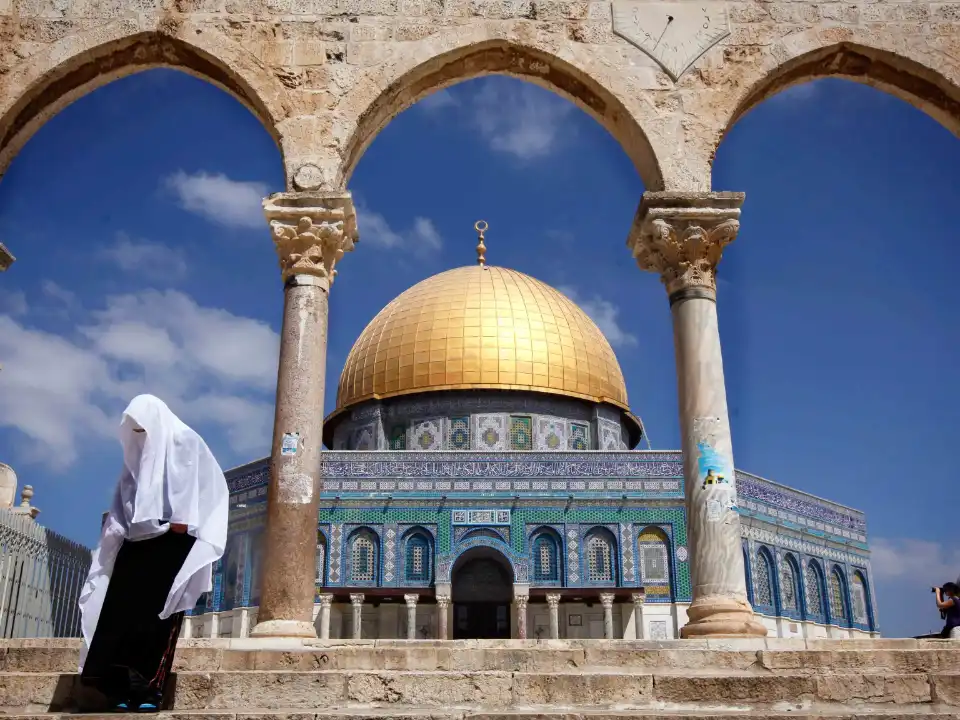

Dome of the Rock is considered one of the holiest sites in Jerusalem, revered by Jews, Christians and Muslims for many reasons. It’s worth noting that it’s one of the hardest places to visit due to its great importance, makes it more devoted to prayer than anything else.
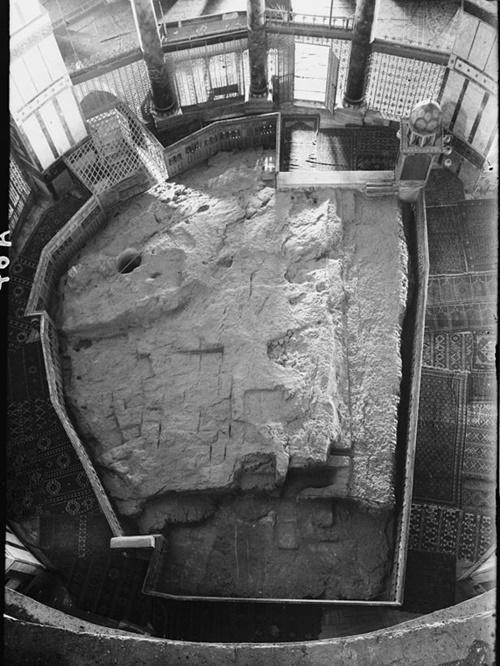
The stunning Dome of the Rock stands proudly on this site and is the most iconic landmark in the city. The central dome of this church glistens with gold and the colorful tiled exterior walls are absolutely magnificent.
Walking around the small streets of the Old City (Jerusalem travel blog)

Jerusalem is densely packed with alleyways, and its steep streets are still mostly intact from the Middle Ages. Along these streets are souvenir shops, stalls selling fruit, silk, fleece and religious items. Wandering in this small but solemn space, you will find yourself both small in the midst of thousands of years of history, and very proud when stepping on the stones that have been worn down by time. The scent of incense, the sound of prayers, the sound of church bells creates a thick mixture of ancient smells before your eyes.
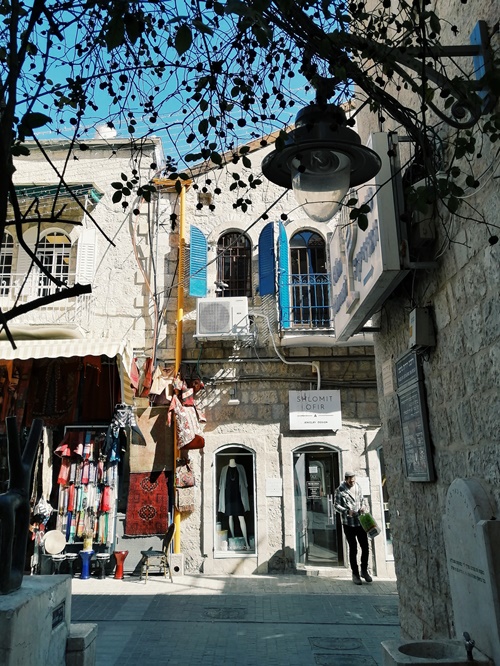
Machaneh Yehudah Market
Machaneh Yehudah Market on Agripas Street has a vibrant and bustling atmosphere when you wander past stalls of sweets, fresh fruit and vegetables, fresh loaves, nuts, pastries, meats and more.



You dodge to dodge trays, carts and locals with bags full of local produce. Your head spins as you hear the calls of the market vendors, the jeering of hurried deals, and the lure of fresh juice bars and fast food joints. No wonder it is one of the main attractions of Jerusalem and a beautiful window into local life.

At night, the market is a fun hangout for the trendy kids of the city. Vendor stalls are transformed into seating areas, tables and chairs are laid out, and restaurants, pop-up shops and bars are in full swing. This can also be where you spend a lot of time.
Jaffa Street

Jaffa Street runs through the heart of the New City, connecting everything together. In some picturesque and quaint areas, it’s nice to stroll and take in the shopping and dining that’s hidden behind it. In the evening, the streets around Zion Square come alive with the buzz of local bars and entertainment venues, where you can sip local Goldstar beer.
What to eat in Jerusalem?

The first thing I have to warn you about: Jerusalem is not a foodie paradise for most people. Simply put, in a city with a strong and dense religious atmosphere, the food is also humble and ascetic. Don’t expect to have a great party experience in Jerusalem. Jerusalem is the Holy Land of three monotheistic religions, and what is clear is that all three of them ban or restrict pork. Don’t expect to find pork in Jerusalem. Jews and Muslims are extremely strict vegetarians and their signature food is Hummus, made from pureed cooked chickpeas mixed with tahini (sesame butter), olive oil, salted lemon juice and garlic.

In Jerusalem we eat a lot of veggie bread and hummus. If you absolutely must eat meat, the new neighborhood has a number of lamb sandwiches. However, lamb has a pretty smell, so many people will not be used to it. Your only consolation in Jerusalem is fresh fruit. Israel is a country with the most advanced agriculture in the world, so pomegranates, oranges, and apples here are very sweet, big and available in many street stalls. Don’t forget to try the specialty pomegranate juice.

Because food in Jerusalem is quite expensive, if you’re traveling on a budget, head to the local markets to find authentic dishes made with fresh ingredients, sample different cuisines from different religions, cultures and ethnicities, and make the most of the street food selling by roadside stalls to get the best food at an affordable price.
A city rich in history and home to diverse culinary traditions, Jerusalem is second to none when it comes to delicious street food. A unique balance between Eastern and Western influences, these dishes have become synonymous with the city and with Israeli culture. You can try hummus, falafel, bourekas or knafeh, shawarma, shakshuka, sabich, turkish coffee, arak, local craft beer and many other delicious dishes.



What to buy as a gift in Jerusalem?
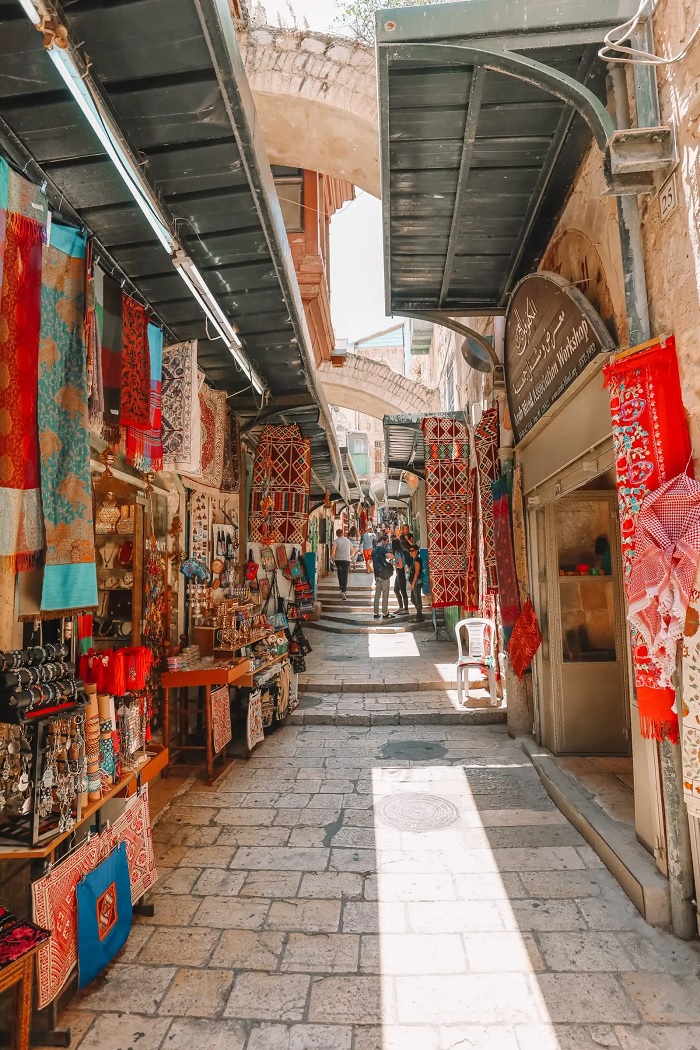
Souvenirs or religious symbols are the most valuable gifts in Jerusalem. Religious followers are proud to own items with the word Jerusalem on them. In the Muslim District, you should buy candy, olive oil, and dried fruit because these are two specialties of Arab countries. In the Armenian District, buy pottery in the shape of a pomegranate as it is a typical item of Armenians who are famous for their craftsmanship. In addition, cosmetics with ingredients from dead sea minerals in the Jewish district are also valuable gifts for relatives.

Some useful notes before you go
How to dress when coming to Jerusalem?
Make sure you dress politely and discreetly. It is best whether you are a man or a woman, you should wear long pants, long sleeves and prepare a headscarf if entering a mosque. And when you get to the Wailing Wall, someone will give you a top hat if you are a man.
How to behave properly in Jerusalem?
Be as discreet, polite and proper as possible. You absolutely avoid indiscriminate behaviors such as screaming, touching others without permission, staring at them as well as using profanity in a foreign language. Many Jewish, Muslim and Christian monks try to stay away from women and of course you should not approach them to avoid any risks. People in Jerusalem are generally not very friendly, hospitable. On the road if you need help you can ask the young people, they speak English quite well and are more open.
What to do to ensure your safety?
Do not carry weapons or sharp objects with you because obviously if you do you will not get through the security check and believe me, Israeli police and soldiers do not look very approachable. Do not approach the Palestinian-Israeli border and temples, shrines that are closed or do not allow women to get in (signs will be posted outside).
Some best day tours, trips, activities and transfer services, tickets in, from and to Jerusalem you can refer to
- Jerusalem Day Tour
- Jerusalem, Dead Sea Day Tour & Bethlehem from Tel Aviv
- Jerusalem, Dead Sea and Bethlehem Day Tour
- Jerusalem Holy City Tour
- Dead Sea Chill Out Trip from Jerusalem
- [Unlist] Jerusalem Hills Private Jeep Tour
- Jerusalem Mount of Olives Tour
- Jericho, Ramallah, and Bethlehem Day Tour from Jerusalem
- Jerusalem Shabbat Tour
- Masada, Ein Gedi, Dead Sea Tour
- From Tel Aviv: Jerusalem and Bethlehem Guided Day Trip
- From Tel Aviv/Jerusalem: Masada Sunrise, Ein Gedi & Dead Sea
- From Jerusalem: Masada & Dead Sea Full Day Tour with Pick Up
- From Tel Aviv: Jerusalem Old City & Dead Sea Guided Day Tour
- From Tel Aviv: Jerusalem and Bethlehem Guided Day Trip
- From Jerusalem: Tour to Bethlehem, Jericho, and Jordan River
- Full Day City Tour of Jerusalem
- From Jerusalem: Nazareth and Sea of Galilee Tour
- From Jerusalem: Full-Day Bethlehem and Dead Sea Day Tour
- Jerusalem: Customized Tour with a Local Guide
- From Jerusalem: Half-Day Bethlehem Guided Tour Small Group
- From Tel Aviv: Jerusalem Old & New City Bus Tour
- From Jerusalem: Masada, Ein Gedi, Dead Sea Guided Tour
- Masada & Dead Sea Tour: Full-Day from Jerusalem
- Jerusalem Half-Day Sightseeing Tour
- Best of the West Bank Full-Day Tour from Jerusalem
Read more about Middle East guide here.


